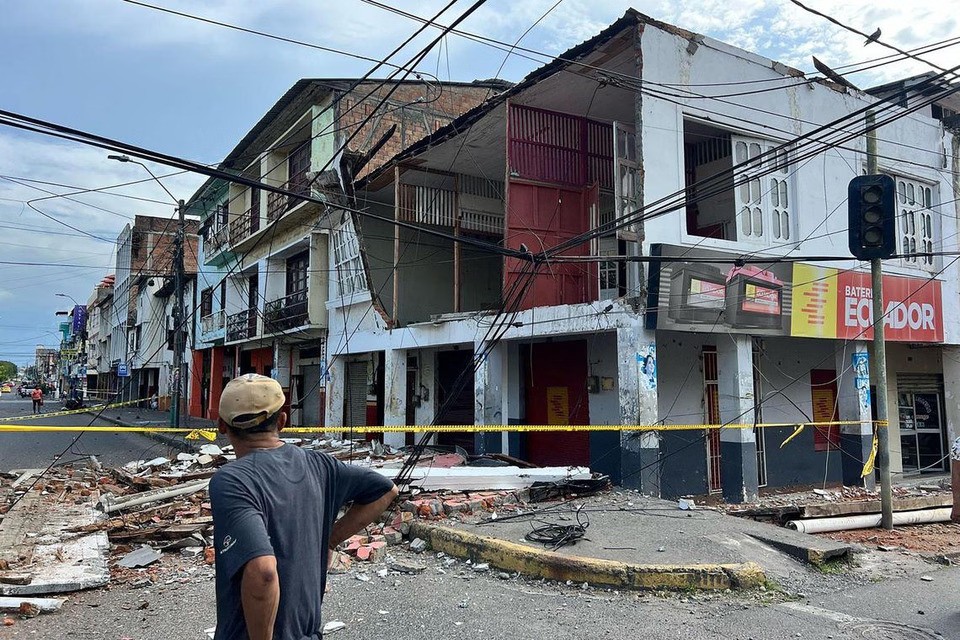Quake in Ecuador leaves trail of destruction, dozens injured

Authorities reported that at least 60 homes and a health center were damaged.
A powerful earthquake hit Ecuador’s coastal city of Esmeraldas early Friday morning, injuring at least 20 people and causing widespread destruction to homes, roads, and essential infrastructure.
The tremor, measured at a magnitude of 6.3 and considered shallow, struck just off the coast at a depth of approximately 35 kilometers, according to the US Geological Survey and Ecuadorian monitoring services.
The quake was strong enough to be felt in Quito, the capital, and in several other provinces, sparking panic and concern among residents.
Emergency services confirmed that the injured sustained head and other types of trauma as a result of the earthquake, which jolted the city shortly before 7 am local time.
"It was very strong," former presidential candidate Yaku Perez said at the scene.
"It felt like an eternity, but I guess it was less than a minute."
Images from Esmeraldas showed damaged buildings, with walls and facades having collapsed into the streets.
An AFP reporter noted cracked structures and debris littering the roads as families gathered outside their homes, taking in the aftermath.
Authorities reported that at least 60 homes and a health center were damaged. The facade of a military building also partially collapsed.
Two roads and a bridge sustained damage as well, disrupting movement and emergency responses in some areas.
Petroecuador, the national oil company, announced a temporary halt in operations at the Esmeraldas refinery and a nearby pipeline due to the quake.
The refinery has a daily output of 111,000 barrels, while the affected pipeline, the Trans-Ecuadorian Pipeline System, handles 360,000 barrels per day.
President Daniel Noboa, who was recently re-elected, assured the public that help was on the way.
He said ministers were being dispatched to Esmeraldas to oversee emergency responses, including the establishment of shelters and the provision of relief supplies.
"The government is with you, and that's how it will be going forward," he posted on social media.
The Geophysical Institute of Ecuador explained that the earthquake was caused by the movement along the fault between the Nazca and South American plates.
The plates shift at a rate of 5.6 centimeters annually, making the country vulnerable to strong seismic activity.
"The convergence of the Nazca and South American plates, which have a movement speed of 5.6 centimetres (2.2 inches) per year, is the process that generates the largest earthquakes in the country," the institute stated.
Tremors were reported in 10 out of Ecuador’s 24 provinces. Despite the quake’s strength, there was no threat of a tsunami, and neighboring Colombia did not report any injuries.
The disaster comes days after the country marked the anniversary of the devastating 2016 earthquake that struck Manabi and Esmeraldas provinces.
That tragedy, a 7.8-magnitude quake, claimed 673 lives and left about 6,300 others injured.
While Friday’s earthquake did not reach the same level of devastation, its impact was a sharp reminder of Ecuador’s seismic risks.
Authorities are now focused on ensuring aid reaches affected communities, assessing infrastructure stability, and restoring vital services.
